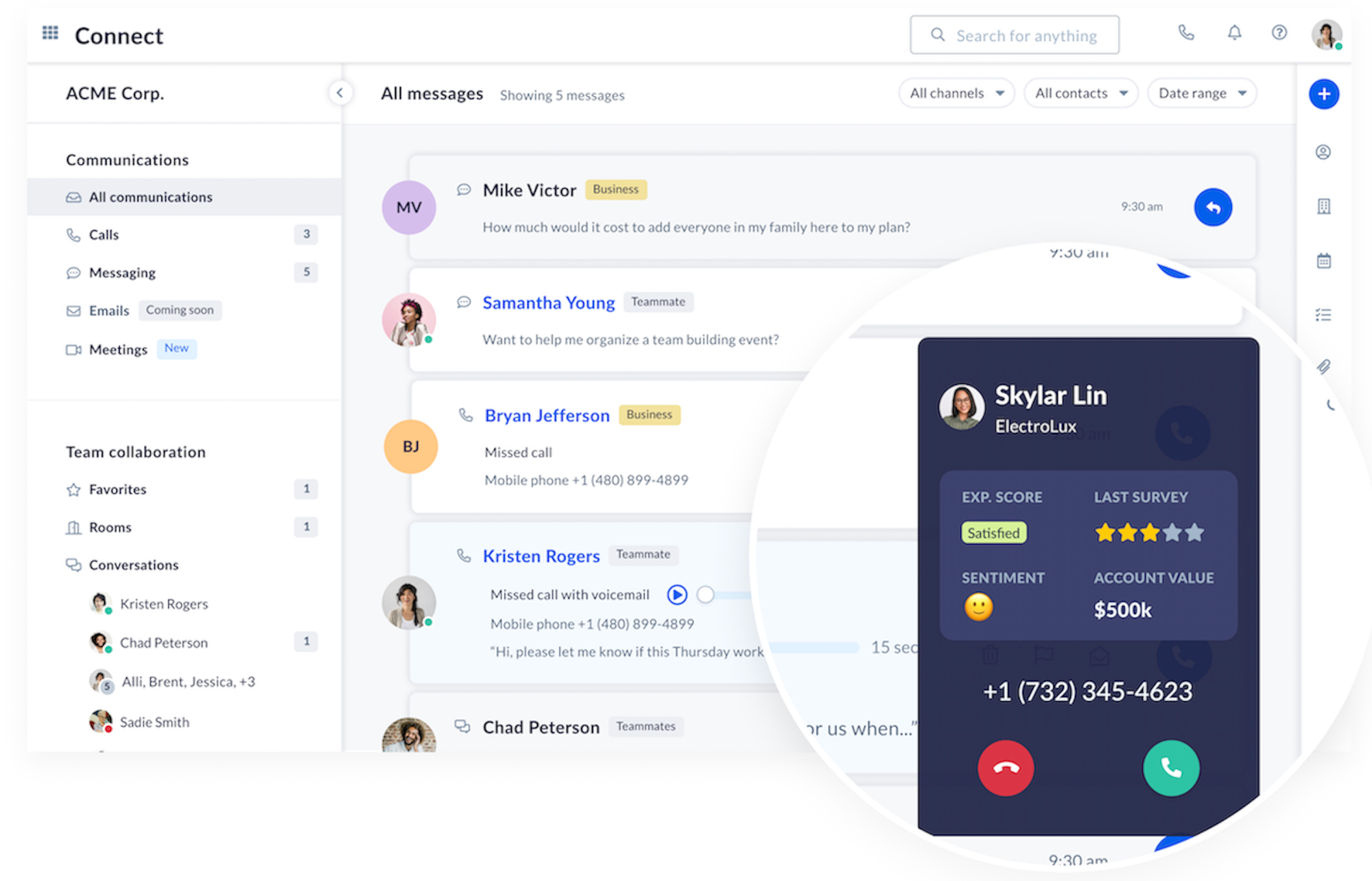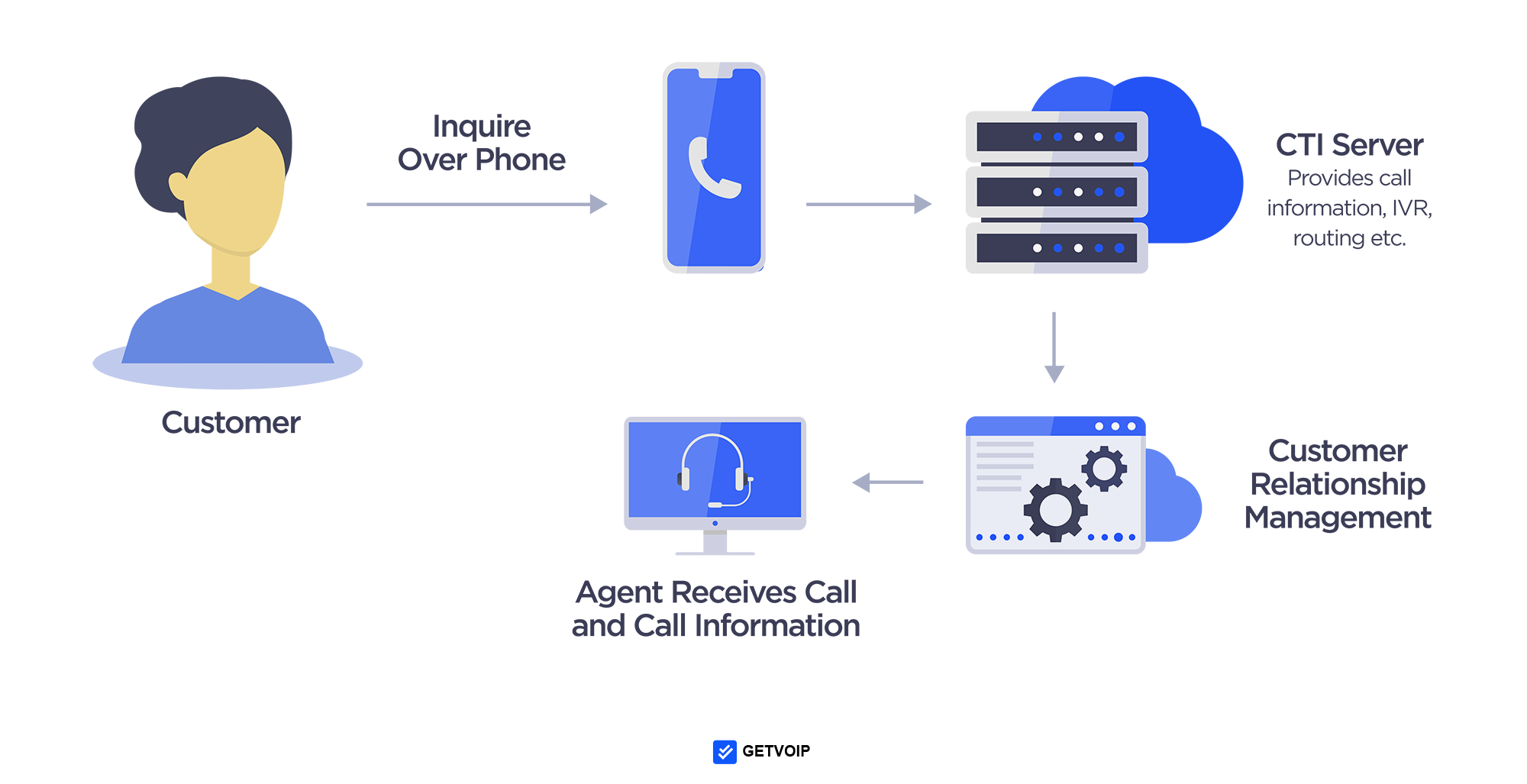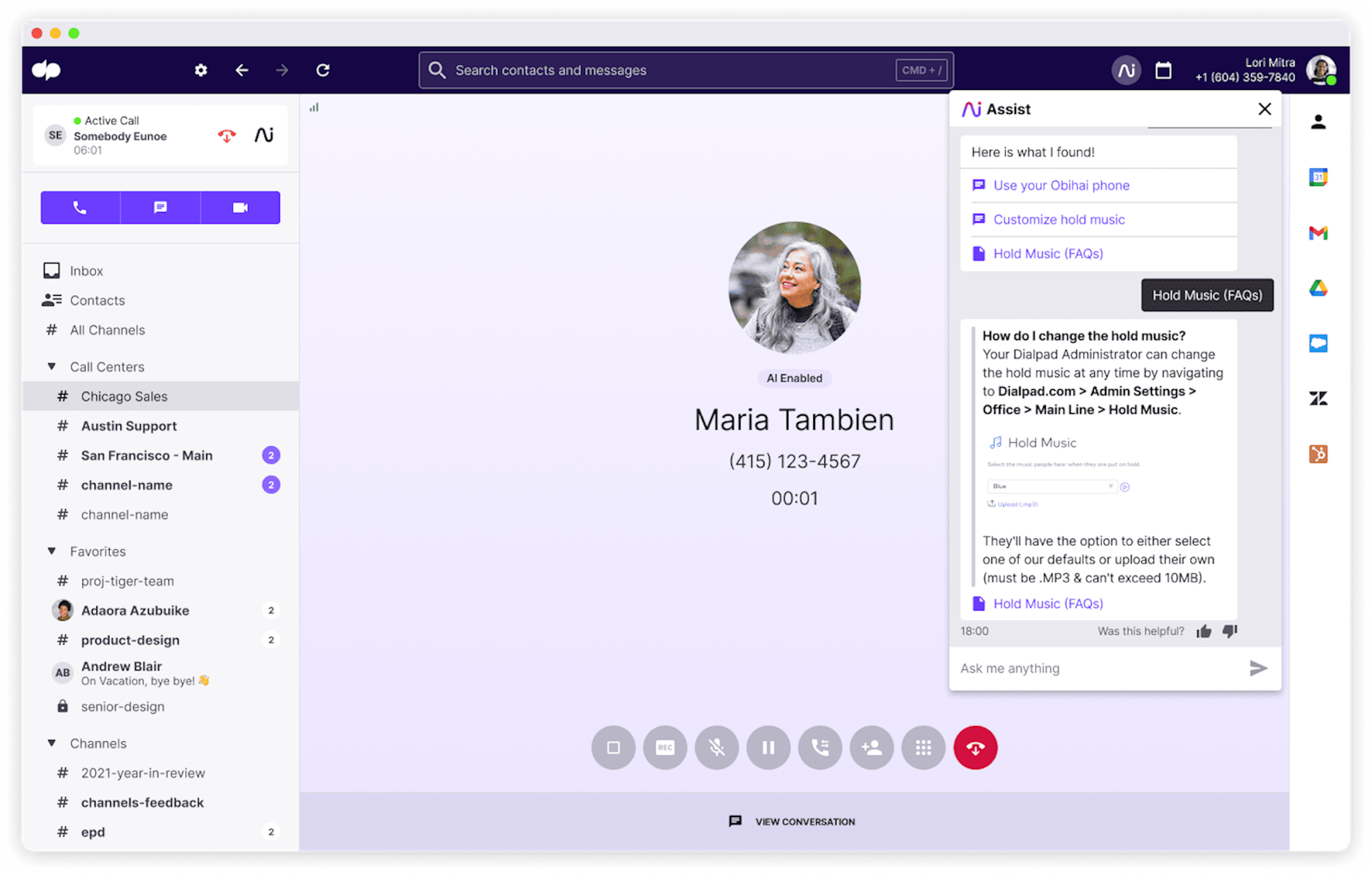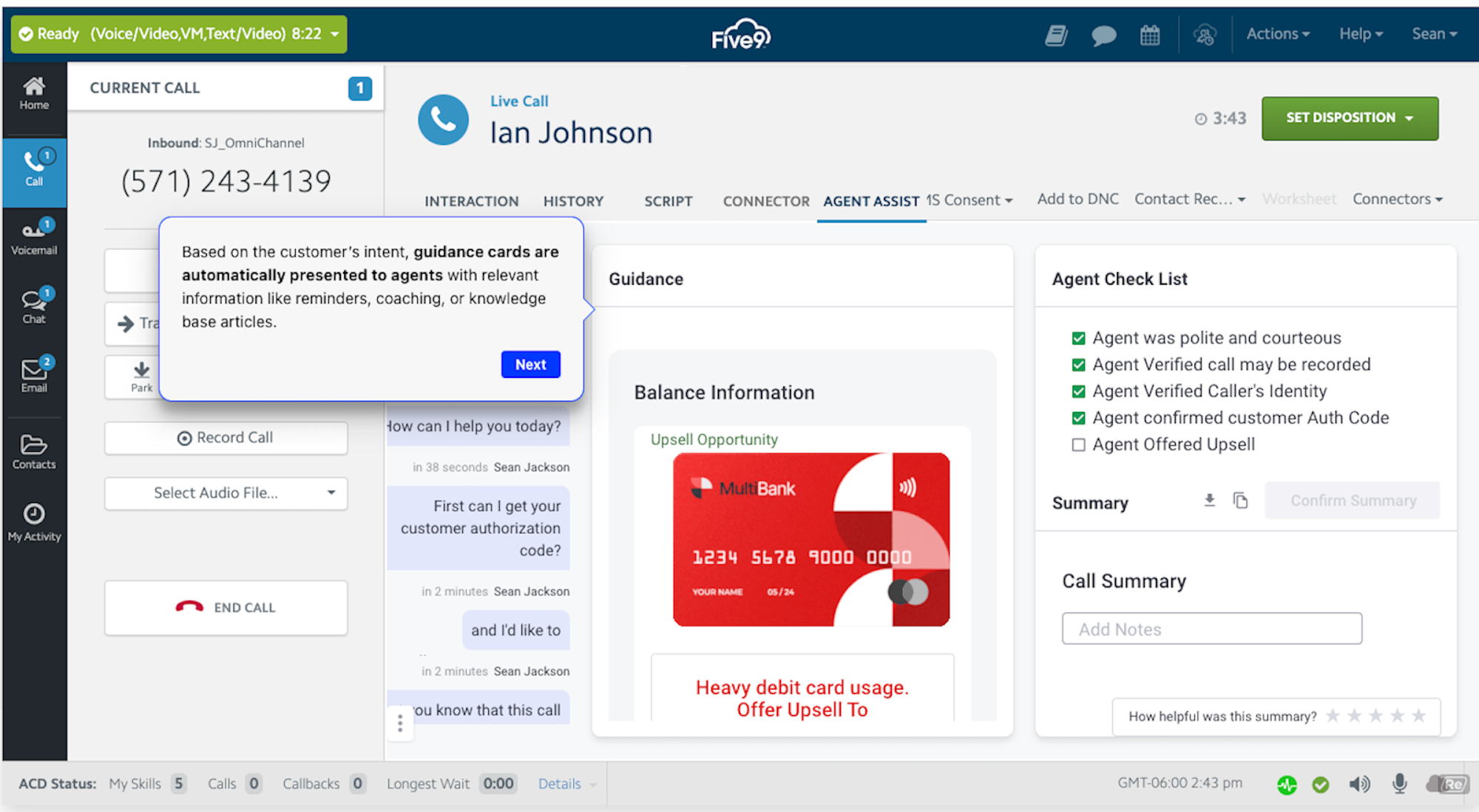CTI (Computer Telephony Integration) establishes a connection between your business phone system and computers, giving agents instant access to essential customer data and call management functionalities.
By streamlining multiple business applications into one unified interface, CTI technology eliminates the need for bulky desk phones, cuts down on constant app switching, and enables in-conversation screen pops.
What else can CTI do, how does it work, and what are some of its most popular use cases?
What is Computer Telephony Integration (CTI)?
Computer Telephony Integration (CTI) technology connects and facilitates interactions between phone systems and computers.
When your contact center receives an inbound call, CTI screen pops automatically display the caller ID, relevant data from integrated applications like CRM systems, and call management options directly on agent screens. CTI lets agents make/receive in-app or browser-based voice calls within the computer softphone interface–no landline required.

But CTI does much more than just facilitate voice calling. It also enables desktop and mobile access to native and integrated contact center capabilities like:
- Call forwarding, call routing, and call transfer
- Interactive Voice Response (IVR) and Automatic Call Distribution (ACD)
- Omnichannel communication across voice and digital channels
- Team collaboration tools (chat, video calling, whiteboards, etc.)
- In-conversation Agent Assist
- Real-time and historical analytics
- Outbound auto dialers
The results?
More helpful, personalized, and faster customer service–from more engaged, productive, and empowered agents.
How Does CTI Work?
CTI works by leveraging VoIP technology to connect external business applications to your office phone system.

While VoIP makes/receives voice calls, the CTI server:
- Collects and processes the call data
- Reviews relevant details from integrated tools
- Automatically takes the appropriate action based on preset rules
- Displays relevant data on agent screens
Because VoIP facilitates voice calls over the Internet instead of the wired landline network, users can access their phone system in any location, and on any device, with a working Internet connection.
Popular CTI Use Cases
Although CTI powers virtually all contact center functionality, its most popular use cases are:
Customer Service and Support
CTI technology is the foundation of call center customer service, empowering omnichannel support, self-service, and real-time customer:agent conversations.
IVR lets customers interact with a pre-recorded call menu prompt to direct their own calls, while more advanced voicebots powered by Conversational AI can resolve more complex issues without involving a live agent.

A variety of call routing strategies ensure customers are connected to the best available agent, shorten call queues and hold times, and evenly distribute workloads between reps.
Once a customer is connected to an agent, the CTI-powered Agent Assist tool displays relevant CRM data, call scripts, and support documents on agent screens, directly within the call interface. Agent Assist even provides AI-generated replies that agents can read out loud or copy-paste directly in the chat window. Once a call is complete, the CRM system is automatically updated to ensure all agents have access to the most up-to-date customer information. Automated post-call summaries give future agents further context into prior customer interactions and, if needed, make it easier for agents to collaborate on support tickets.
Lead List Penetration
Outbound dialers with a variety of dialing modes improve lead list penetration, automate the lead qualification and list scrubbing processes, and streamline after-call work.

Admins can choose from progressive, power, preview, and predictive dialers based on campaign goals and agent availability. They can also upload call scripts and canned responses that automatically show on agent screens, enable voicemail drop, and assign campaigns to specific call groups.
Employee Training+Onboarding
CTI technology gives agents access to essential helpdesk and knowledge base data throughout the training process and during live interactions with customers. During the onboarding process, CTI screen pops can guide agents through training materials, test and score agents, and send feedback to managers.

These tools speed up the onboarding process, allow agents to pause and resume training at any time, and ensure they have a strong grasp of the material before they work with customers. AI-powered agent coaching offers automated in-conversation next-best-action suggestions, while post-call interaction summaries and score sheets help agents understand how to improve their performance.
Customer Journey Optimization
Admins can build customer surveys, automate post-call survey delivery across voice and digital channels, and use speech and text analytics to identify trends in customer sentiment and agent behavior.
Analytics tools can be configured to automatically generate reports at preset intervals, focus on specific KPIs like CSAT and NPS, and help admins identify trends in call volume. Findings from real-time and historical analytics help contact center managers improve the customer journey, identify customer and agent pain points, and optimize agent schedules.
Admins can also set up real-time KPI alerts that automatically notify them when call center metrics drop below SLA standards. This way, admins can immediately assist struggling agents via call whisper, in-call coaching, or by taking over the call completely (call barge.)
The Benefits of CTI
CTI equally benefits enterprise-level contact centers and small businesses across various industries. Why? Because at its core, CTI technology enables faster and more accurate customer support, improves agent performance, and meets the needs of today’s remote and on-the-go teams.
The top CTI benefits are:
Improved Customer Experience
CTI gives agents access to complete omnichannel customer conversation histories, notes from other agents, and essential CRM data like account value and past transactions–both before and during live interactions. This helps agents better prepare for calls, prevents customers from repeating themselves, and provides conversational context for more personalized customer service.
Increased FCR and Reduced Hold Times
CTI functionalities like advanced call routing and call forwarding make it much easier for customers to connect with the best available agent instead of the first available agent. Not only do automated call routing strategies and ring groups shorten call hold times, but they also increase first contact resolution rates.
If an agent with the right training isn’t available to assist a caller, next-best-action suggestions and in-call coaching via Agent Assist allow available agents from other departments to provide accurate customer support.
IVR, chatbots, and auto attendants enable 24/7 customer self-service across channels, allowing customers to solve more basic support requests without involving a live agent. This helps shorten customer support queues while keeping live agents free to assist with more complicated, higher-priority issues.
CTI also powers automated customer callbacks, which let callers schedule a callback at their preferred time instead of waiting on hold for an available agent.
Increased Agent Productivity
CTI screen pops–especially those powered by AI–instantly increase employee productivity by automating and optimizing routine business processes.
Screen pops proactively provide in-conversation access to essential CRM and helpdesk data, eliminating the need for time-consuming manual data lookups. Outbound auto dialers speed up lead list penetration by automating after-call work, lead qualification, and the actual dialing process. In-call Agent Assist provides automatic canned or AI-generated responses, next-best-action suggestions, and relevant call scripts based on customer sentiment and real-time Conversational AI analytics.
Lower Operating Costs, Higher Profits
CTI lowers contact center impacts your bottom line in a variety of ways, including:
- Increased FCR: Improving FCR by 1% reduces operating costs by 1%
- Omnichannel Communication: An effective omnichannel communication strategy leads to a 7.5% reduction in cost per contact
- Upselling+Cross-Selling: Businesses that leverage AI and automation features, including those powered by CTI, see a 14% increase in revenue from upselling and cross-selling and an 18% improvement in customer lifetime value
- Remote Teams: CTI makes it easier to hire remote employees–which could save your business up to $10,600/year, per employee.
What To Look For In A CTI Provider
While available third-party integrations are the most important aspect when choosing a CTI provider or call center software, there are other key factors to consider:
- Security Standards and Network Reliability: 99.99% minimum guaranteed uptime, network redundancy, end-to-end encryption, PCI, GDPR, and HIPAA compliance, regular risk assessment and penetration testing, automated backups, etc.
- Customer Support: Installation and onboarding assistance, available support hours and communication channels (phone, live chat, email, etc.), priority support options, etc.
- Scalable Pricing and Plans: Monthly and annual payment options, available a la carte individual add-ons, features included with each bundled pricing tier, overall value for money
- Ease of Use: Intuitive interface, customizable agent dashboard, shared inbox, push notifications, personalized user training, on-demand tutorials/webinars, etc.
- Available Features: Included call routing strategies, multi-level IVR, available communication channels, AI-powered speech analytics, workforce optimization and workforce management, quality monitoring, native team chat and CRM tools, etc.
FAQs
Below, we've answered the top CTI FAQs.



